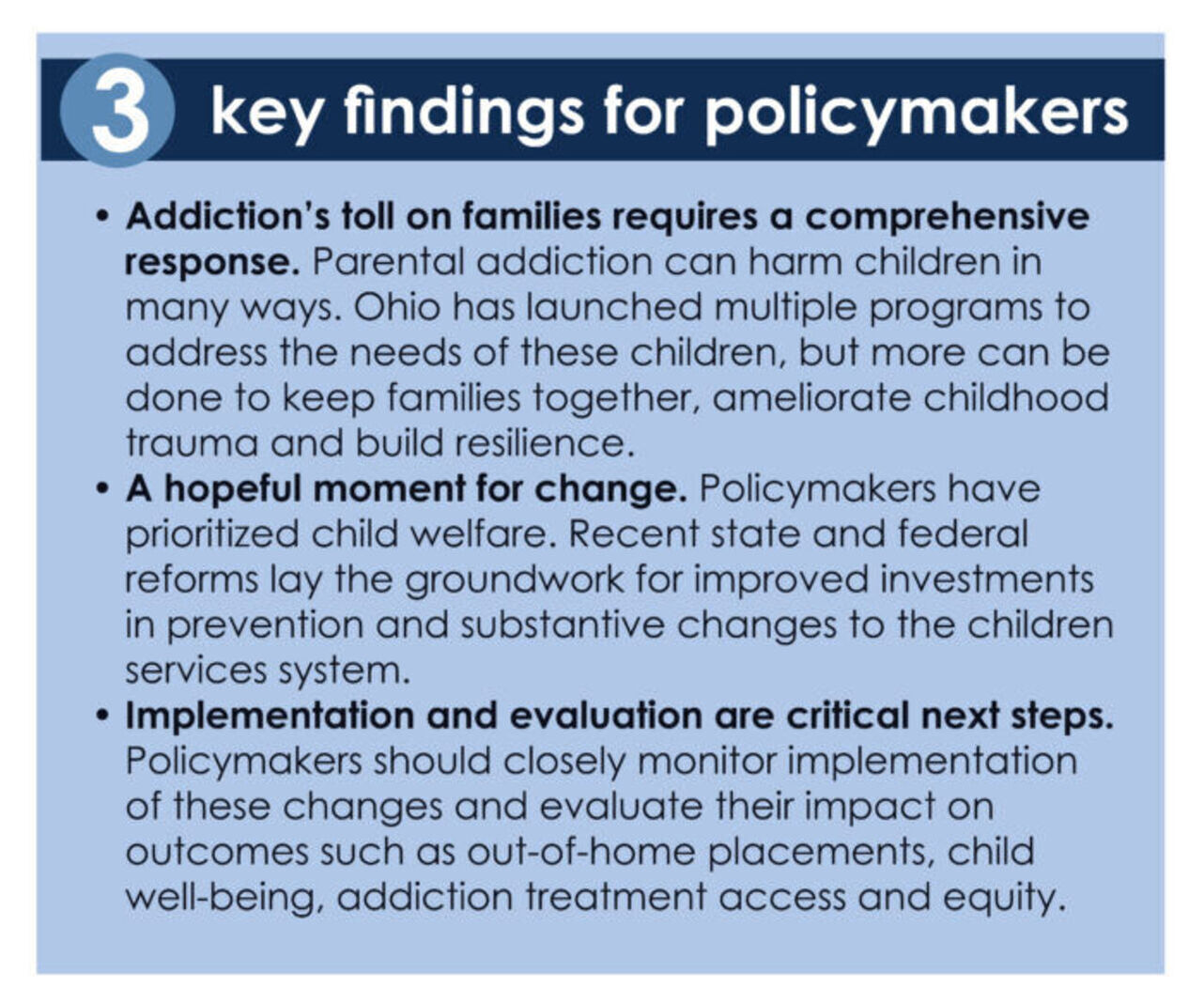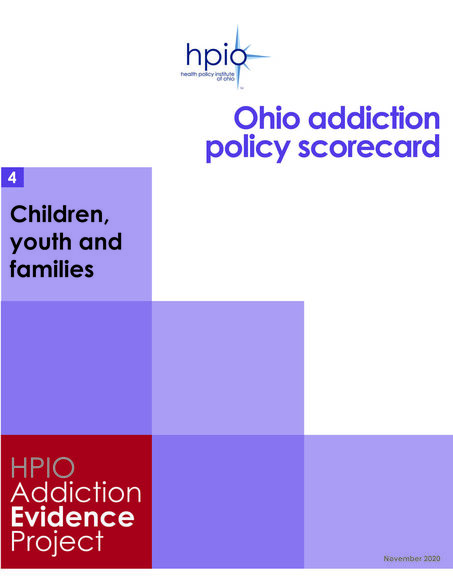Ohio addiction policy scorecard:
Children, youth and families
Ohio’s sharp rise in drug overdose deaths from 2011 to 2017 was followed by a steady increase in the number of children entering the child protection system. These trends highlight the relationship between the opioid crisis and child maltreatment. Parents in active addiction face many challenges to providing a safe and stable environment for their children.
Parental substance use can harm children at every stage of development, from preconception to adolescence. Left unchecked, the consequences of addiction and family instability can lead to negative education, employment, health and criminal justice outcomes for children and their communities.

Local children services agencies have struggled to keep pace with caseloads that rose 33% from 2013 to 2020. State policymakers have grappled with child protection reforms within the constraints of limited resources and the decentralized nature of Ohio’s children services system.
Several hopeful developments, prior to the COVID-19 pandemic, indicate that Ohio may have turned the corner. For example, the number of Neonatal Abstinence Syndrome (NAS) cases fell in recent years, and the number of children removed from the home due to parental drug use declined slightly in 2019, after peaking in 2018.
This report reviews state-level policy changes related to the impact of addiction on children, youth and families enacted in Ohio from 2013 to 2019. It includes:
- An inventory of policy changes (legislation, rules and state agency initiatives, programs and systems changes)
- A scorecard that indicates the extent to which Ohio is implementing strategies that are proven effective by research evidence (see figure ES. 2)
- Opportunities for improvement to strengthen Ohio’s response

